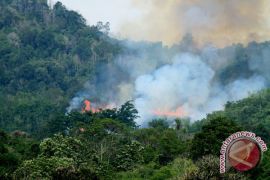The study found that between 1995 and 2005 areas with little or no snow with between 0 and 20 percent probability of snowfall covered 36 percent of the territory, and this spread to 44 percent between 2005 and 2017.
That was an increase of 5,200 square kilometers, which the report said is well beyond any margin of error.
This "irrefutable observation" was drawn up by researchers from the University of Geneva, Switzerland, and the GRID-Geneva of the United Nations Environment Program (UNEP).
It is based on the preliminary analysis of 22 years of satellite data covering the entire Swiss territory.
"Generally speaking, we can also observe that the low snow conditions prevailing on the plateau are gradually gaining ground in the Jura and in the Alps, a phenomenon particularly evident in the Rhone Valley," noted Gregory Giuliani, a researcher at the UNIGE Institute for Environmental Sciences (ISE) and at GRID-Geneva.
This study used the new tool, the Swiss Data Cube, initiated on behalf of the Federal Office for the Environment (FOEN), said Xinhua.
"Switzerland is the second country in the world, after Australia, that has developed such a data cube, and we are the first to produce such a detailed map on a country scale," said Giuliani.
The data extracted from the Swiss Data Cube reveals that snow is gradually disappearing from the plateau and is also becoming scarcer higher up.
The "eternal snow" zone, where the probability of snowfall varies between 80 percent and 10 percent, still covered 27 percent of the Swiss territory in the decade 1995-2005.
Ten years later, it had fallen to 23 percent, a loss of 2,100 square kilometers equal to seven times the size of the canton of Geneva.
Due to a scientific collaboration between UNIGE and the University of Zurich, in a strategic partnership signed between the two universities in late 2017, new data will soon be added to the existing database, the statement said.
Reporter: Antara
Editor: Chaidar Abdullah
Copyright © ANTARA 2018







